8.4 Search
The search in Retain 4 is designed to work much like a Google search, with anticipated auto-correct search terms. The Search tab will allow searching across the entire Archive for administrators, while users will only be able to search their own archive.

The Search tab allows for management of searches. This is accomplished by Saving searches for later use. These searches can then be shared with others, loaded later, removed when no longer desired, and trimmed to remove duplicate data.

The icons for these functions are on the right, next to the search field. In order: Load, Save, Share, Delete, and Collapse Duplicates. Collapse duplicates removes all duplicate results but only functions with GroupWise mailboxes.
To begin a search, type the desired search term into the search query field, or load a saved search. The search results will be automatically populated on specified search terms after a sufficient pause in typing. The auto complete suggestion feature requires at least 3 characters to be specified and a pause of several seconds before it will begin to work.
Tokenized Search Phrase
The indexing engine follows Unicode Standard Annex #29. This standard uses many common characters such as ' " . : @ + - * / and , as phrase ending or beginning characters. These characters will cause the system to read any character separated terms as individually entered items when the search is performed. Individually entered terms are treated as OR searches. For example, this means that using the search term 10/20 will be processed as 10 OR 20. Substituting a space instead of the character will provide a logical 'AND' search. For example, searching for 10 20 will be processed as 10 AND 20 as the search term. For example, searching for an email address test@gwava.com will drop the @ even in an exact search with double quotes and with return test AND gwava.com.
Spaces between normal search terms are a delimiter between search terms:
The search algorithm follows these criteria:
-
Highest weighting: All delimited words together consecutively. (e.g. Searching for "quick brown fox" while the message contains: "The quick brown fox jumped over the lazy dog.")
-
All delimited words in the string although they may not be right next to each other. (e.g. quick AND brown AND fox)
-
Least weighting: Any of the delimited words in the string. (e.g. quick OR brown OR fox)
Results from these different terms are weighted in the order listed above. This behavior can be overridden by locating the solarcloud.indexing.properties file and changing the property phraseSearch.singleWordMatch. Setting this property to '0' turns this off, while leaving it set at '1' activates this search behavior.
Result terms are also highlighted in the user interface to ease visual confirmation that the term exists in the message. However, terms in attachments are not highlighted.
8.4.1 Wildcard Search
Accepted wildcard characters are: *, ?, and "". The ‘*’ denotes ‘any character or characters’, while the ‘?’ denotes ‘any one unknown character’. The double quotes(“”) denote an exact phrase, and only that exact phrase. Retain does not index letter case, so “IT” is the same as “it”.
For example, a search for the term “We all love spoons” will fetch a result of that exact phrase. Asterisks may be added inside the double quotes to allow for incomplete or unknown words: “*e all love sp*” will return both ‘We all love spoons for our ice cream’, and ‘We don’t like sporks but we all love space.’. While the ‘?’ works like the asterisk, it is only for a single unknown character. This is particularly helpful when searching for exact phrases where the terms may be misspelled. For example, “Their going” would miss a misspelled ‘there going’. However, if the search term were “The?? going”, it would catch both.
Supported Regex characters are listed in the Advanced Search section.
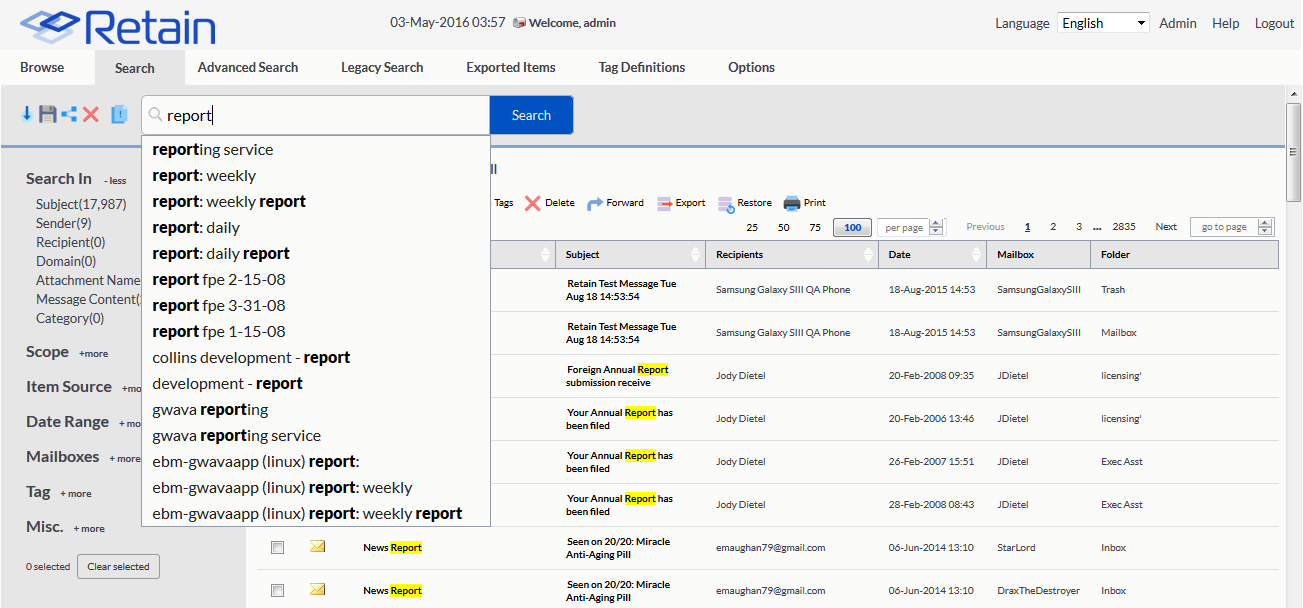
Select a final query, either by hitting enter, clicking with the mouse, or using arrows and hitting enter.
Search results will display the results with the search term highlighted for each message. The message type, Sender, Subject, Recipients, date, mailbox, and folder are all displayed.
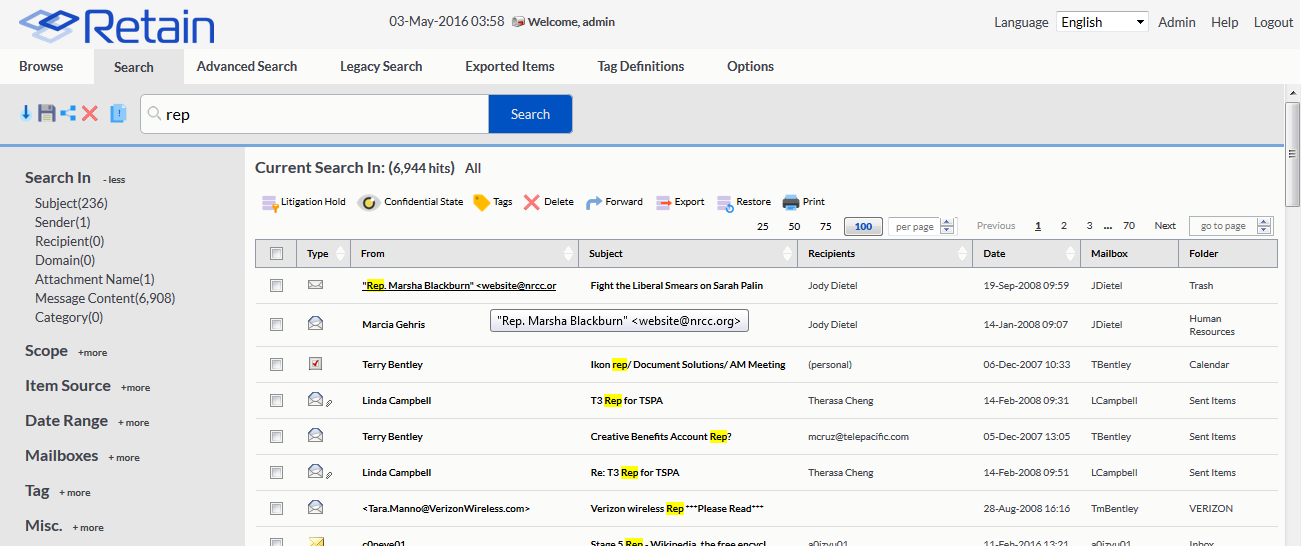
8.4.2 Search In
Once search results have begun to populate, the left hand scope pane is populated with limiting and filtering options. If faceting is enabled the side bar will show numbers next to each section, indicating how many hits there are for each particular topic. The hits are total numbers of matching instances, not items. So if a message states a search term several times in the message body, it will be counted as that many hits even though it is only one message.
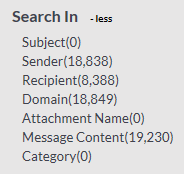
Subject
Sender
Recipient
Domain
Attachment name
Message content
Category
The Search In criteria limits the area in the message or data where the search is performed:
-
The Subject indicates hits in the Subject field.
-
The Sender field contains the sender of the message or data item.
-
The Recipient is the recipient of the item or message.
-
The Message Content will search in the following locations within a message:
-
body
-
attachment
-
subject
-
headers
-
Searching exclusively for the domain will be effective with search terms if a complete domain is provided, otherwise the term is recognized as text. If the top level domain is not known, (.com, .org, .edu, .etc) then the search term should use an asterisk afterwards. For example, searching for gwava.com will yield good results, as will searching for gwava.* or gwava*, though results will vary.
Searching for an item that has BCCed recipients has some special behavior. Retain acts like a normal email system, only the sender and the BCCed recipient can see themselves. If you are logged in as the sender, you will be able to see To, CC and BCC recipients as normal. If you are logged in as the To, or CC recipients, you will only see the Sender, To and CCed recipients. If you are logged in as a BCC recipient, you will see the Sender, To, CC, and no other BCC recipients. If you are logged in as admin and in a mailbox other then the Sender, you will not see the BCC recipients listed in the item even though they are returned from the correct mailboxes, except from the Sender folder, because admin is not one of the BCC recipients.
8.4.3 Item Type
The Item Type criteria option limits the type of message which is to be searched. All item types are available in the scope term. Again, the number of available hits is displayed to the side.
The Message Item Type includes:
-
Mobile: SMS & MMS
-
BlackBerry: BBSMS, BBMMS, BBMsg
-
CellTrust: CTSMS
-
Bloomberg: BLMBMessage

Phone message
Appointment
Task
Note
Message
Phone call
BB PIN
Wall posts
Requests
Chats
Likes
Events
Status updates
Comments
Searches
Group posts
Web mail
Media
Rating
8.4.4 Item Source
The Item Source criteria option limits the results to a particular source. This source can be limited to show ‘received’, ‘personal’, ‘sent’, or ‘draft’ items.
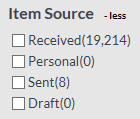
Received
Personal
Sent
Draft
8.4.5 Date Range
The Date Range criteria limits the time frame of item’s creation. Only messages which conform to the date range selected will be displayed in the results field.
The date range may be specified for any of the dates corresponding with an item. The range may also be selected form the drop-down menu, with pre-configured times for last week, month, or year. These time frames are for the past 7 days, the past 30 days, or the past year, not the previous calendar time frame.
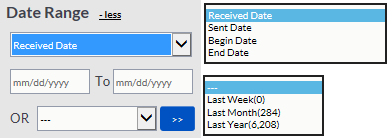
8.4.6 Mailboxes
The Mailboxes criteria limit which mailbox or mailboxes the search will pull results from. To add users to the selected mailboxes list, click on the ‘Select’ button to launch the mailbox selection window.
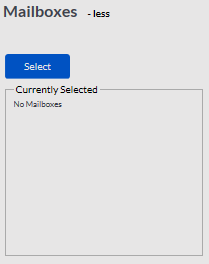
The Select Mailboxes window allows for searching of every mailbox available to the user, the admin user can search all mailboxes. Mailboxes must be searched for by system and specified criteria. The results of the search are displayed below, while the active selected mailboxes can be added to the dialog through the use of the ‘Add Selected’ button along the top. Alternately, if the ‘Add All’ button is clicked, it will add all mailboxes displayed in the search results, the Address Book field. Addresses which have been added to the top field may be removed by selecting the red ‘X’.
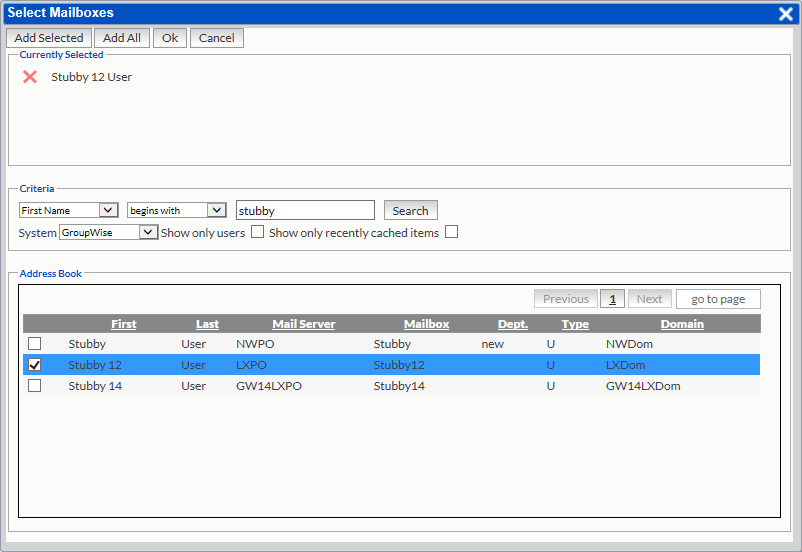
Once the desired addresses have been added to the top window, select the ‘OK’ button to load them into the search pane.
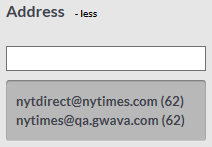
The Address option limits the results to a selected address. The addresses available are displayed below, and may be selected Addresses in the window are dictated by what is in the result set. Selecting an address adds it as a filter to the top of the search window, or the user may specify an address manually. Multiple addresses may be added to the search window at a time. To remove an address filter, select the ‘X’ next to the active address, and the result set will be reset.
8.4.7 Tag
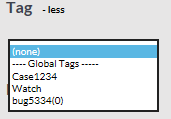
The Tag option limits the search to items which have been tagged with a specific tag definition. The tag definitions may be personal or global. Tags must be specified in advance and applied before this option will work. Select the desired tag to limit the result set.
8.4.8 Misc.
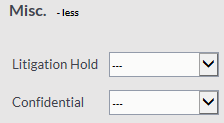
The Misc option contains limits for the Litigation hold and the Confidential tags. They have two settings: True or False. A Setting of ‘True’ restricts all results to only items which have the selected tag.